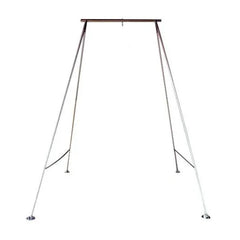The breath is like a dear old friend who’s been with us all our lives, and with whom we can pick up a conversation right where we left off at any time. The breath is our constant companion all day, every day, even while we’re fast asleep.
Breathwork is wonderful to practice on the floor. But when we can take that same awareness into the air with us, it can help us stay calm under pressure, utilize our physical strength, and reach our highest goals. Using the breath can help fuel us through any number of situations, even life-changing experiences like having a baby or going through a medical procedure.
Working with the breath can open up new pathways for your aerial practice, both on and off the ground.
Awareness
The simplest way to connect with your breath is to just sit quietly and observe it. Even 5 minutes of this can be of benefit. Ask yourself, what qualities does my breath have at this moment? How does my posture change from inhale to exhale? Become aware of how the breath can function all on its own as one of the body’s autonomic responses, keeping us alive during the time when we’re not giving it a thought.
Breathing Techniques
Yogis and aerial yogis may already be familiar with pranayama. These techniques of the ancients are still potent tools for us today.
The 4/7/8 breath is adapted from pranayama and can have a relaxing effect if you tend to get upset or anxious. For this technique, inhale through the nose for a count of 4, holding at the top of the breath for 7, and then exhaling strongly through the mouth for a count of 8. Try a round of four of these breaths. Work up to a cycle of 8 rounds maximum.
The Square Breath is another technique that can help calm, soothe, and promote equanimity. Imagine your inhale traveling up the side of a square, then hold the breath as your mind journeys across the top edge of the square. As you begin to exhale, think about moving down the opposite side of the square, holding the breath across the bottom. Repeat.
Optimal Aerial Performance
Use the breath to power through a challenging routine. Working with the inhale and exhale that you have familiarized yourself with while grounded, you can find moments of expansion and contraction in your movements and breathe into them. This gives you an advantage as your lungs deliver precious oxygen to your muscles and cells, calming your mind and relaxing into any counterproductive emotions you may be experiencing, like fear.
Using breathwork backstage before a performance is especially helpful to prepare your mind, power your body, and smooth over stage fright.
If you have practiced your breathing techniques on the floor, taking your breath work to the stage will be very natural. The synchrony between your breath and your flow of movements can become very fluid. And if you get caught up with your silks being fussy or realizing you’re ahead of your music, you can just take a breath, smile, and move on.
When we can establish a breathing practice of any kind, it can assist in all areas of life. Breathwork offers a host of benefits from daily life to the stage. In aerial arts, it’s important to stay safe and keep the breath flowing. Breathing with awareness just may become a mainstay in your bag of magic tricks.




Leave a comment